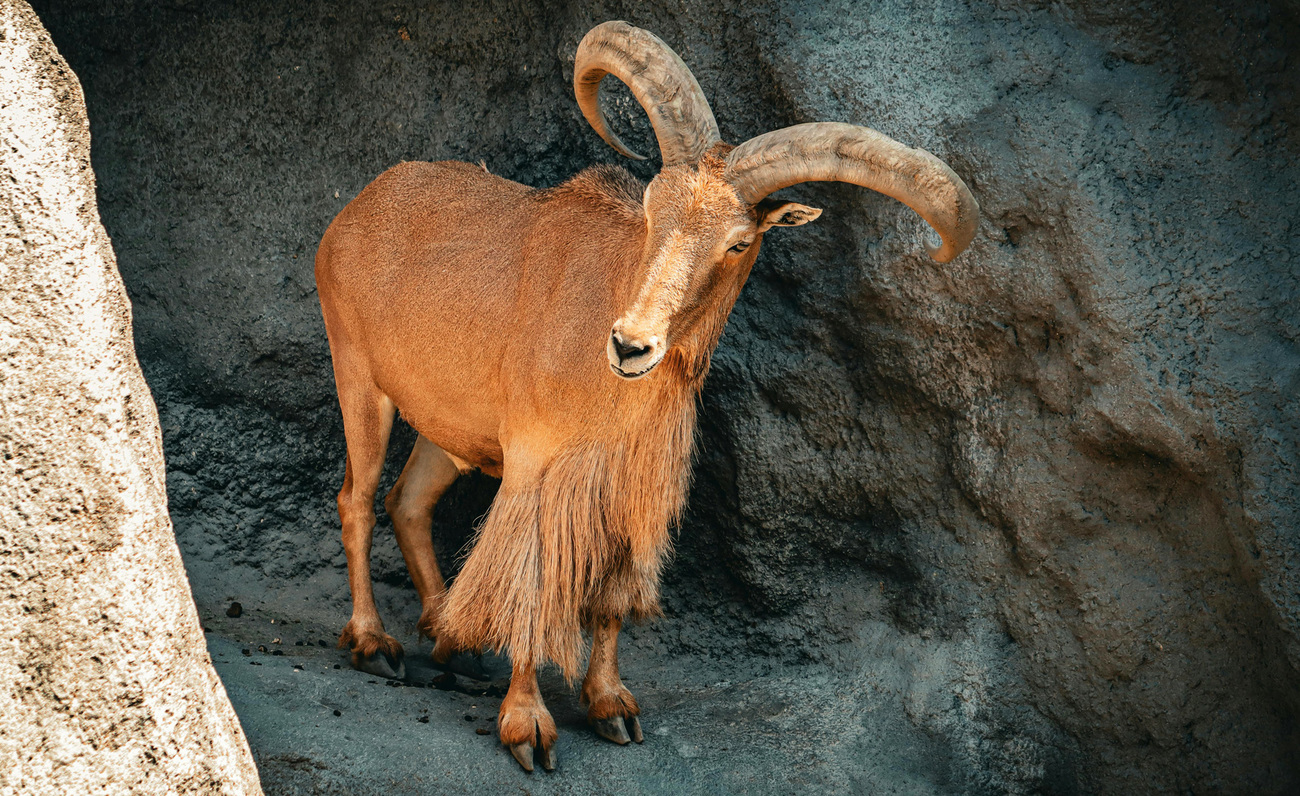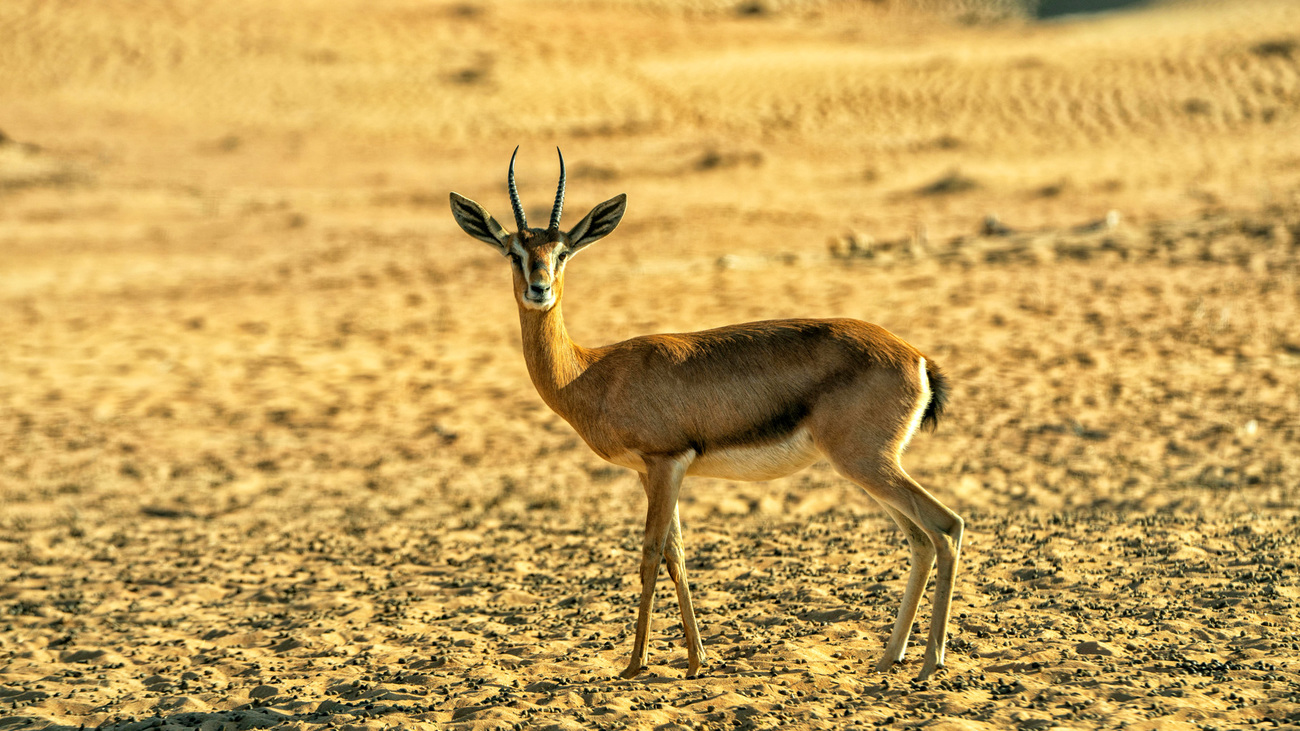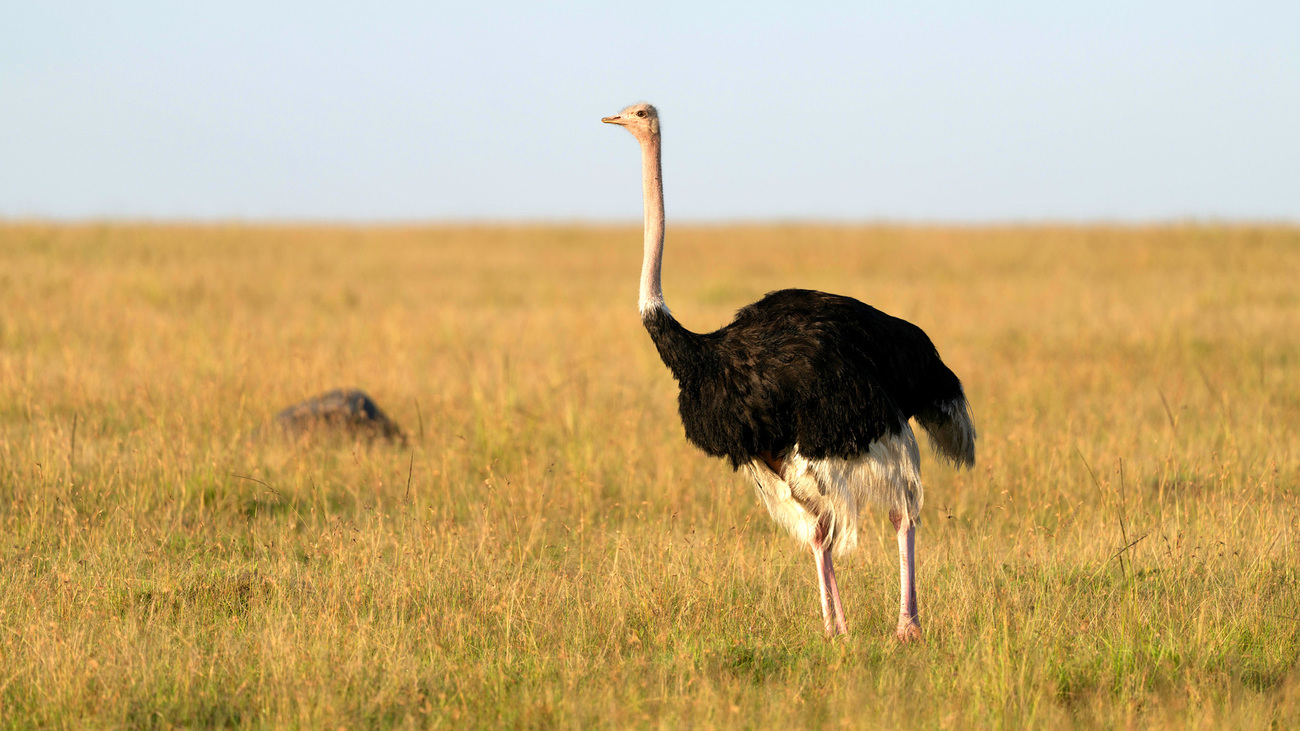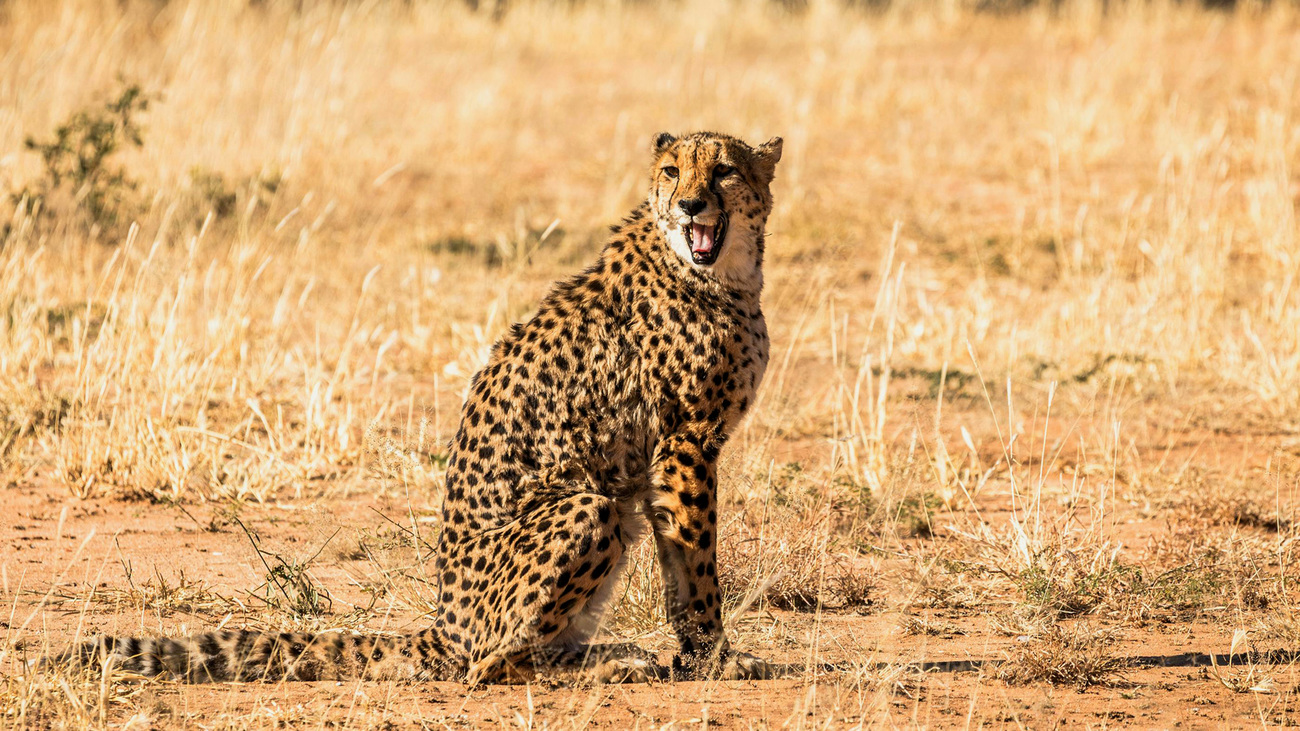Blog
Koala facts and statistics
Read moreAnimals of the Sahara Desert
The Sahara is a vast desert stretching across North Africa, spanning at least 10 countries. With an area of 8,600,000 square kilometres (3,320,478 square miles), it’s the largest hot desert in the world.
As you might expect, with such a large area, the Sahara is home to a wide variety of animal species, from tiny reptiles to huge mammals. There are 70 mammal species, including wild dogs and camels; 90 bird species, from finches to ostriches; and 100 reptile species like crocodiles and lizards. Other animals in the Sahara, like ants and scorpions, may be small in size but play an integral role in the health of the desert’s ecosystem.
Known for its harsh climate, the Sahara is an ecosystem of extremes. In the northern part of the Sahara, which experiences a dry subtropical climate, average temperatures can soar to over 40 degrees Celsius (104 degrees Fahrenheit) during the summer months, while winter temperatures can drop to around 13°C (55°F), and even lower at night. Rainfall in this region is rare, averaging around 76 millimetres (about 3 inches) per year.
The southern part of the Sahara, which has a dry tropical climate, also experiences extreme heat. In the summer, temperatures can reach 50°C (122°F) during the day. Rainfall in the southern Sahara is slightly higher than in the north but tends to be unpredictable. Sometimes, it can rain 200 millimetres (7.8 inches) between July and August in one area, but other regions will experience no rainfall at all.
Because of its extreme heat and dryness, the Sahara is a challenging environment for survival. That means the animals who live here have adapted over millennia just to survive.
For example, the jerboa, a small rodent that lives in the Sahara, doesn’t need to drink water and extracts all its hydration from food. Fennec foxes have developed large ears that help to disperse heat. Camels store fat in their humps and can go long stretches without food. Addax antelopes have a white coat which reflects heat to keep them cool. These are just a few of the adaptations that animals living in the harsh Sahara climate have developed to survive.
Let’s take a closer look at some of the amazing wildlife that call the Sahara home and how they survive in the desert, from the smallest reptiles to massive mammals.

The Barbary sheep, also known as the aoudad, is a species of wild sheep found in the rocky, mountainous regions of the Sahara Desert. Standing around one metre (40 inches) tall, it has shaggy hair, distinctive curved horns, and a reddish coat that blends in with its surroundings.
These sheep are herbivores, feeding on sparse vegetation like grasses, shrubs, and cacti. They can survive for up to five days without water. They endure extreme heat by being active during cooler parts of the day and seeking shelter under rocky outcrops.
The IUCN classifies the Barbary sheep as vulnerable, primarily due to poaching and competition with livestock for food. Loss of habitat due to agricultural expansion, fuelwood collection, and drought also poses an increasing threat.
This small rodent, the lesser Egyptian jerboa, is often compared to a tiny kangaroo due to its long hind legs and tendency to hop around using its tail for balance. Found across the northern regions of the Sahara, these tiny critters are well-adapted to life in the harsh desert.
It is nocturnal, sleeping in underground burrows to avoid the harsh daytime heat. It does not need to drink water and instead gets its moisture from the seeds and plants it consumes. Despite only being about 5 to 15 centimetres (2 to 5.9 inches) in length, the jerboa can travel up to 10 kilometres (6.2 miles) per day in search of food.
The species is currently listed as least concern by the IUCN, but the lesser Egyptian jerboa is threatened by humans who hunt them as food and bait for falconry.
The Scimitar-horned oryx is an antelope species that was once native to the Sahara but became extinct due to hunting and poaching, habitat loss, and periodic droughts. Thanks to conservation efforts, the species has been successfully reintroduced in nature preserves in Chad, Tunisia, and Senegal, with the hope that populations will continue to increase. Classed as endangered, there are currently 140 to 160 mature Scimitar-horned oryxes remaining.
This type of oryx is easily recognised by long, curved horns and a white coat with a reddish-brown neck and chest, which reflect the sun’s heat and help keep the animal cool. This oryx is adapted for desert life, as it feeds on hardy grasses, leaves, and herbs and is capable of going long periods without water.

Another antelope species, the Dorcas gazelle, is found in the Sahara’s grasslands, steppes, wadis, and mountainous regions.
It has a slender body, a tan-coloured coat with white underparts, and long, curved horns found on both males and females. The Dorcas gazelle feeds off the leaves, flowers, and pods of acacia trees, hardy plants that can grow even with just one inch of rainfall per year.
Dorcas gazelles can withstand high temperatures and harsh sunlight and can extract most of the water they need from the plants they eat.
The IUCN lists the Dorcas gazelle as vulnerable, and its population is decreasing due to hunting and habitat loss from drought.
Also known as the Anubis baboon, the olive baboon is found in southern areas of the Sahara and is so named for its distinctive dark olive green coat. They have dog-like muzzles, and males of the species tend to have a prominent mane of hair over their heads and shoulders.
Olive baboons are omnivorous, an adaptation that serves them well in desert conditions when not all food sources are readily available year-round. While they feed on fruits, seeds, mushrooms, and other plant matter, they also eat insects and hunt for small mammals when necessary.
The IUCN lists the olive baboon as least concern, though some populations are hunted or persecuted for crop-raiding.
Rüppell’s fox, also known as the sand fox, is a small fox species found across the Sahara Desert. Its sandy-coloured coat provides excellent camouflage in its environment, and its large ears help dissipate heat.
This nocturnal predator is omnivorous and feeds on small mammals, birds, insects, and fruits. It is well-adapted to the harsh desert climate and obtains most of its water from its food. It burrows in the sand to escape the daytime heat and rear its young.
The IUCN classes Rüppell’s fox as least concern, but it faces threats from hunting and has been outcompeted by red foxes in some areas.

A subspecies of the common ostrich, this large bird was once widespread from western to northeastern Africa. Now, the declining population is only found in six of the 18 countries where they once lived.
These huge animals are 2.74 metres (nine feet) tall and weigh up to 154 kilograms (340 pounds). The North African ostrich is a striking member of the Sahara’s ecosystem with a distinctive pink neck, long pink legs, and black-and-white plumage. This ostrich is primarily an herbivore that mainly feeds on grasses, leaves, and seeds but sometimes eats insects and small animals.
Ostriches have excellent heat management skills—they can contract muscles to raise their feathers off their bodies, resulting in increased airflow to their skin. They can also go several days without drinking water, an essential ability in the dry Sahara.
The North African ostrich population has drastically declined to the point where they are listed in CITES Appendix I, primarily due to hunting, egg collection, and habitat loss. Being listed in CITES gives these birds maximum protections from trade.
Native to northern Africa, the desert eagle owl is found in open areas of the desert, where it builds its nests in rocky outcrops, wadis, and cliffs.
It has a striking appearance, with mottled brown and cream feathers that provide excellent camouflage against the rocks and large orange eyes, great for hunting at night.
This owl preys on small mammals, birds, reptiles, and insects—basically, anything it can find. It uses silent flight to ambush its prey.
Primarily nocturnal, the desert eagle owl escapes the heat by resting in shaded, rocky areas where it lays eggs and raises its young. The IUCN classifies the desert eagle owl as least concern with a stable population.
A small, non-migratory bird, the desert lark is found throughout the arid and semi-arid regions of the Sahara Desert. Primarily a ground-dweller, its muted brown or greyish plumage blends well with the desert environment, protecting it from would-be predators.
Able to survive with little water and endure extreme temperatures, the desert lark builds its nest in sheltered spots like rocky crevices or under bushes to protect it from the harsh sun.
The desert lark is classed by the IUCN as least concern with an increasing population.
The Sahara frog lives in the oases, canals, and other bodies of water scattered across the northern parts of the Sahara Desert. This is a large frog species; researchers noted one female individual measuring 10.4 centimetres (around four inches) long. It has smooth, greenish-brown skin with darker spots.
Unlike many other desert dwellers, as an amphibian, the Sahara frog is dependent on water. It is found near permanent or seasonal water sources, where it feeds on insects and small invertebrates. During the dry months, these frogs burrow underground to escape the sun, where they can survive for many months while they wait for the next rain to fall.
The Sahara frog is classed by the IUCN as least concern with an increasing population, but it faces threats from urban expansion and overexploitation of water resources.
Found in forested swamps, marshes, freshwater rivers, and streams of West Africa, fully grown West African crocodiles can be up to four metres (13 feet) in length. They are typically olive or brown coloured, with a more slender snout compared to the Nile crocodile.
This carnivorous hunter eats anything it can get its jaws on, including fish, birds, large mammals, and other vertebrates. It is mostly active at night, when temperatures drop. During the day, it alternates between basking in the sun and hiding in the shade—this is how it regulates its body temperature as a cold-blooded animal.
The IUCN has yet to assess the conservation status of the West African crocodile, which was only classed as a distinct species from the Nile crocodile in 2011. Though it is an adaptable creature, it is hunted and persecuted as a pest in some areas.

The Northwest African cheetah is a rare and critically endangered subspecies of cheetah found in the Sahara’s grasslands and savannahs. It has a pale coat with faint spots, which provides camouflage in the arid desert landscape.
This cheetah hunts mainly at night to avoid the extreme daytime heat. It preys on small to medium-sized ungulates like antelopes and hares, using their blood as its hydration source rather than water. It can run extremely fast to catch prey without exerting too much energy in the heat.
Northwest African cheetahs are extinct in more than 20 countries, with fewer than 8,000 remaining in the wild.
Also known as the Saharan horned viper, the desert horned viper thrives in dry sandy areas with rocky outcroppings in the northern parts of the Sahara. This venomous snake is recognised by the prominent horn-like scales above its eyes and its light, sand-coloured body with dark crossbands.
The desert horned viper preys on small mammals, birds, and lizards, using its venom to immobilise its prey. During the day, it buries itself in the sand to escape the heat and to ambush unsuspecting prey.
Though they are classed by the IUCN as least concern, desert horned vipers are under threat from human collectors who want the snake for its venom or for exhibition.
The Nubian spitting cobra is a highly venomous snake found in small pockets across the northern Sahara desert, particularly around the Nile River. It has a dark brown to black body, and it is well-known for its ability to spit venom accurately at the eyes of potential threats, causing pain and possible temporary blindness.
The Nubian spitting cobra preys on small mammals, birds, amphibians, and other reptiles. It is nocturnal and avoids the intense daytime heat by sheltering in burrows or under rocks.
With its stable population numbers, the IUCN has classed this cobra as least concern, though it does face threats from habitat loss and receding water tables.
Fish are rare in the Sahara, as only a select few bodies of water exist year-round. The cichlid fish has adapted over millennia to survive in this uncertain habitat.
Cichlids are omnivorous, feeding on algae, small invertebrates, and even smaller fish. Their flexible diet helps them survive despite fluctuating prey availability.
Fish species in the Sahara have also adapted to be highly tolerant of high salinity levels and to withstand significant temperature fluctuations in the water.
Every problem has a solution, every solution needs support.
The problems we face are urgent, complicated, and resistant to change. Real solutions demand creativity, hard work, and involvement from people like you.
Unfortunately, the browser you use is outdated and does not allow you to display the site correctly. Please install any of the modern browsers, for example:
Google Chrome Firefox Safari